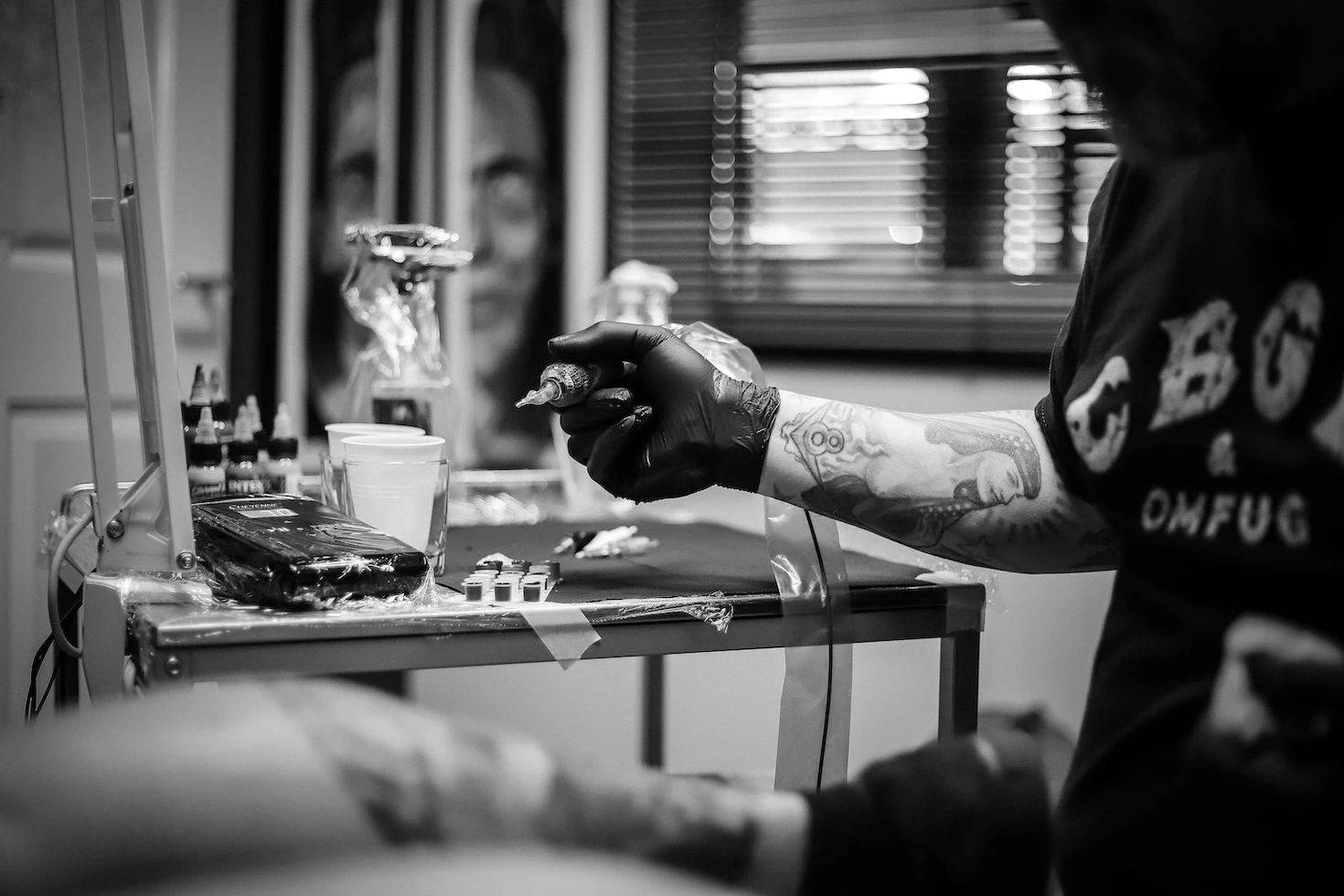Somewhere today a young woman can be found rushing to her nearest tattoo shop. Finally saving enough money for what might be her first, second, or fifth tattoo. Either way, she is brave to pick such a sensitive area, at the base of her spine. She is willing to overlook the pain as she takes her place laying on the tattoo table. Excitedly waiting for her chosen piece of artwork, maybe a cheeky quote or a favorite flower, to be permanently etched into her skin. Through her nervous enthusiasm she may be totally unaware of the long line of tradition this event carries. From her mom’s similar experience in the ’90s to ancient Egyptian women preparing for childbirth, lower back tattoos have held a great deal of significance for women for a long time.
Tattoos and slut shaming
The lower back tattoo has been a popular placement for women going in and out of fashion since the 1980s. Butterflies, crucifixes, hearts, and more appeared on the backs of women that wanted something fun, pretty, or sentimental to decorate their body. It was easy to hide which was valuable at a time of significant stigma against body modifications. Many were also drawn to the placement as it seemed universally flattering. Since becoming popular various names were derogatorily thrown at this trend. The chick spot, bulls eye, bumper sticker, or target had all been used before society fell on the tramp stamp, implying these women were promiscuous and trashy.
According to Negotiation and Resistance: The Female Tattooed Body by Ariane Ellerbrok, this link between tattoos on women and promiscuity in western culture likely stems from 19th and 20th century circuses. Heavily tattooed women were made spectacles of as traveling circus performers. They would often strip in order to show their tattoos to audiences. Another likely source of this demonization of tattooed women is racism. Many cultures of people of color include tattooing. Throughout the process of colonization those in power sought to eliminate original cultures by painting them in a negative light.
Ellerbrok discusses how the promiscuous label can be so damaging because, “[I]t can be applied at any time for reasons that seldom have anything to do with sexual behavior”. This label is used to attack a women’s reputation and self esteem for something as simple as a tattoo. Society doesn’t only do this to modern women. When female Egyptian mummies were found with tattoos, they were initially dismissed as concubines when they were likely high ranking priestesses.

Tattoos across time and cultures
Lower back tattoos didn’t gain this bad reputation until recently. Ancient Egyptian women got tattoos on their lower backs and thighs in preparation for childbirth. These tattoos are thought to be in honor of the Goddess Hathor. As a sky deity associated with motherhood, love, and sexuality, appealing to her may grant these women protection during this time.
In the 20th century, Winifred Smeaton was published an article on the tattooing practices Among the Arabic community in Iraq. In this article Smeaton recounts how an Iraqi midwife informed him of the magical aspects of tattooing. Lower back tattoos were believed to increase fertility and small designs were tattooed were placed above the glutes.
Lower back tattoos have obviously been an important part of the female experience throughout many eras and cultures. As it is an intimate area of the body it has been associated with fertility and sexuality for some time. While today it’s associations with sexuality are used to demean it’s wearers, for most of history it was viewed as a source of empowerment, divine protection, and strength. Lower back tattoos were a symbol of solidarity among women. The Egyptian childbirth tattoos are thought to have been worn not only by the birthing women, but the midwives aiding her as well. There is power in togetherness, and that is what this tattoo evokes.
The tramp stamp today
The “tramp stamp” took a dive in popularity towards the end of the 2000s due to the negative reputation it gained. In 2013 a study found that men were more likely to assume promiscuity from women with lower back tattoos. Those with this tattoo received less respect. This lead to many women hiding their body art. Nicole Richie opted to get her tattoo removed as to not be associated with “that group”.

Though, with ’90s and 2000s fashion coming back in style the infamous tramp stamp has come along with it. Following current tattoo trends, the modern day tramp stamp tends to be more minimal. Fine line and micro tattoos are popular, but the classic styles and motifs of the past can never be fully replaced.
Many people have opted to embrace the tramp stamp name. The rude sentiments have been replaced and many welcome it’s nod to good times and empowerment for a group who is used to being shamed.
Check out:
Childhood Sweethearts, Invisible Strings, and Predestined Bonds in ‘Past Lives’







Be First to Comment